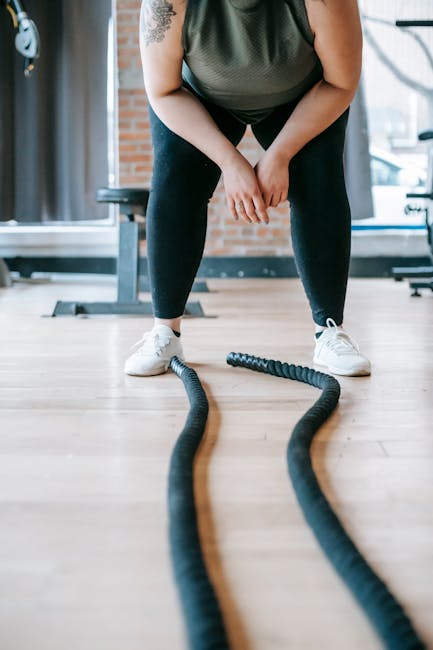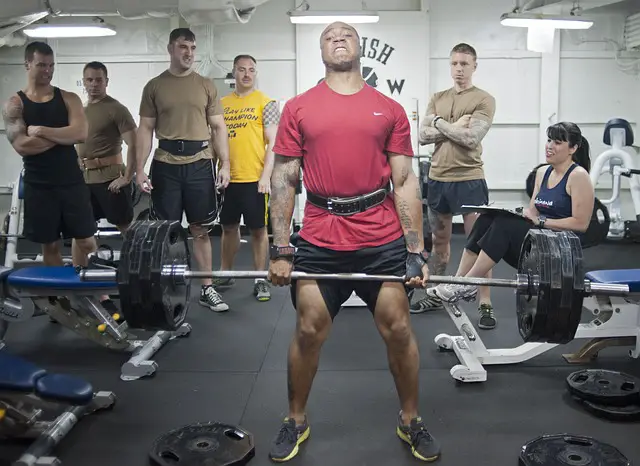Have you heard the one about weight lifting stunting your growth? Well, let me tell you, it’s about as true as a unicorn wearing a tutu. There’s a whole bunch of weight lifting myths floating around out there, and I’m here to debunk them faster than you can say “protein shake.” So, grab a dumbbell and settle in, because we’re about to get jacked with some truth bombs.
Contents
- 1 1. Separating Fact from Fiction: Debunking Common Myths around Weight Lifting and Growth Stunts
- 2 Separating Fact from Fiction: Debunking Common Myths around Weight Lifting and Growth Stunts
- 3 2. The Science behind Growth Stunts: Understanding the Impact of Weight Lifting on Children and Adolescents
- 4 3. Examining the Evidence: Studies Disprove Claims that Weight Lifting Stunts Growth
- 5 4. Safe Lifting Practices: How to Help Young Athletes Build Strength Without Compromising Growth Potential
- 6 5. Busting the Myth: Encouraging Young People to Embrace the Benefits of Weight Lifting for Physical and Mental Health
- 7 Don’t Let The Myths Weigh You Down
1. Separating Fact from Fiction: Debunking Common Myths around Weight Lifting and Growth Stunts
Separating Fact from Fiction: Debunking Common Myths around Weight Lifting and Growth Stunts
Let’s face it, many people believe that weight lifting can stunt your growth. I mean, it makes sense, right? If you lift heavy weights, you might squash your growth plates and stop growing. Sorry to burst your bubble, folks, but this couldn’t be further from the truth. In fact, weight lifting can even help you grow taller! How, you ask? Well, it strengthens your bones, increases your muscle mass, and improves your posture, all of which can make you look taller and more confident.
Another myth surrounding weight lifting is that it can turn fat into muscle. I hate to break it to you, but this is simply not possible. Fat and muscle are two different types of tissues, and one cannot turn into the other. What weight lifting can do, however, is help you build muscle and burn fat simultaneously, leading to a leaner and more toned body. So, if you want to get rid of those love handles, hit the weights and watch the fat melt away.
And last but not least, I must address the infamous myth that lifting heavy weights can make women look bulky and manly. Ladies, let me tell you something: lifting weights will not turn you into Arnold Schwarzenegger, so you can put away those tiny dumbbells and grab a barbell with confidence. In fact, weight lifting can help you sculpt a toned and feminine physique, with curves in all the right places. So embrace the weights, ladies, and let’s show the world what we’re made of!
- Myth: Weight lifting stunts your growth. Fact: Weight lifting can actually help you grow taller.
- Myth: Weight lifting turns fat into muscle. Fact: Fat and muscle are two different types of tissues and cannot turn into each other.
- Myth: Weight lifting makes women look bulky and manly. Fact: Weight lifting helps women sculpt a toned and feminine physique.
2. The Science behind Growth Stunts: Understanding the Impact of Weight Lifting on Children and Adolescents
The science behind growth stunts and weight lifting in children and adolescents is a hotly debated topic among parents, coaches, and scientists alike. Some argue that weight lifting can stunt a child’s growth, while others claim it can actually promote growth. So what’s the truth? Well, it’s complicated.
One thing we do know for sure is that the myth that weight lifting stunts growth is just that: a myth! As long as children are using proper form and not overexerting themselves, weight lifting is actually a great way to promote bone growth and muscle development. However, it’s important to note that weight lifting should always be done under the guidance of a trained professional to prevent injury.
But let’s be real here, even with all the science and guidance in the world, if a child doesn’t want to lift weights, they probably won’t. So, instead of trying to force them to hit the gym, encourage them to get active in other ways. Whether it’s playing sports, dancing, or even just going for a walk, there are plenty of ways to promote healthy growth and development without forcing a child to lift weights.

3. Examining the Evidence: Studies Disprove Claims that Weight Lifting Stunts Growth
Examining the Evidence: Studies Disprove Claims that Weight Lifting Stunts Growth
Listen up all you scrawny, pint-sized individuals! Despite what your grandma thinks, lifting weights won’t stunt your growth. That’s right, you can finally hit the gym without worrying about being permanently stuck at 5’5″.
But don’t just take my word for it. Numerous studies have proven that weight lifting has no negative effect on growth and development in children and adolescents. In fact, it can actually have a positive impact by increasing bone density and muscle mass.
So, what’s the verdict? Put down the milk carton you’re using as a makeshift weight and pick up a barbell. And while you’re at it, tell Grandma to stick to knitting sweaters instead of spewing old wives’ tales.
- No studies have shown that weight lifting negatively impacts growth or development in children and adolescents.
- Weight lifting can actually have a positive impact on bone density and muscle mass.
- Telling Grandma you’re hitting the gym may result in a lecture about “kids these days.”
4. Safe Lifting Practices: How to Help Young Athletes Build Strength Without Compromising Growth Potential
If you’re anything like me, you’ve spent your fair share of time attempting to lift heavy objects without much success. However, as a young athlete, it’s important to develop proper lifting techniques to build strength without compromising growth potential. Here are a few safe lifting practices to keep in mind:
- Stretch it out! Before lifting any weight, it’s important to warm up your muscles with some light stretching. Picking up heavy objects without proper preparation can lead to strained muscles and even worse, strained egos.
- Lift with your legs, not your ego. It’s easy to get caught up in the excitement of lifting heavy weights, but young athletes should always prioritize proper form over the amount of weight they’re lifting. Remember, lifting with your ego instead of your legs can result in more than just a disappointing workout.
- Listen to your body. If something doesn’t feel right during a lift, don’t be afraid to put the weight down and reassess your form. After all, a few moments of embarrassment are better than a few months of recovery time.
By following these safe lifting practices, young athletes can build strength and improve their overall physical well-being without compromising their growth potential. So go ahead, grab those weights and lift like a champion! Just make sure to stretch, prioritize proper form, and listen to your body along the way.
5. Busting the Myth: Encouraging Young People to Embrace the Benefits of Weight Lifting for Physical and Mental Health
Let’s get real, folks: weight lifting isn’t just for meatheads and gym rats. It’s actually a fantastic way for young people to improve both their physical and mental health. So, let’s bust the myth that weight lifting is just for muscle-bound jocks and start encouraging younguns to pump some iron!
First of all, weight lifting is a great way to build your strength and endurance. It’s not just about bulking up and getting ripped (although, let’s be real, that’s a nice bonus). When you lift weights, you’re working all sorts of muscles that you might not normally engage through cardio exercise. You’re also increasing your bone density, which is super important for preventing injuries later in life. Plus, lifting weights can help you feel better about yourself – there’s nothing like hitting a personal record to boost your confidence!
But it’s not just physical health that weight lifting can improve. Studies have shown that resistance training (a fancy name for weight lifting) can reduce symptoms of anxiety and depression. That’s right – pumping some iron can help you feel more relaxed and less stressed out. Plus, lifting weights can help you sleep better, which is essential for overall wellbeing. So, if you’re feeling down in the dumps, why not hit the gym and lift some weights?
In conclusion, let’s stop associating weight lifting with bulky bodybuilders and start encouraging young people to embrace its many benefits. Not only does lifting weights help you build strength and endurance, but it can also improve your mental health by reducing symptoms of anxiety and depression. So, grab some dumbbells and start pumping – your body and mind will thank you!
Don’t Let The Myths Weigh You Down
And there you have it folks, the truth about weight lifting and growth stunts. Hopefully, we’ve shattered those pesky myths that have been holding you back from achieving your fitness goals. So, the next time someone tells you that lifting weights will make you short, just tell them to take a hike (preferably up a steep hill, it’s great for leg day!). Remember, strong is the new skinny, and don’t let anyone tell you otherwise. Get lifting and grow tall…er, stronger!








Leave A Comment